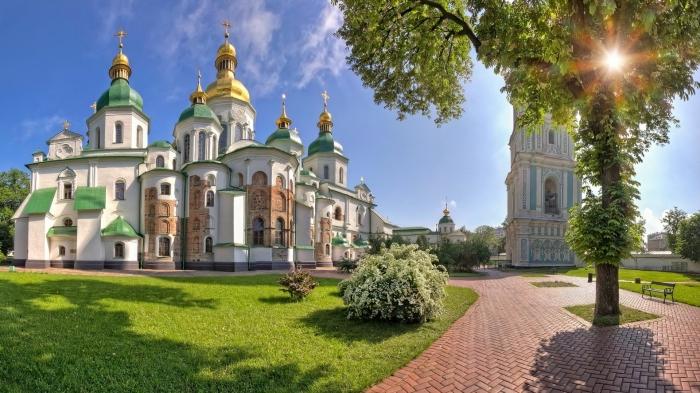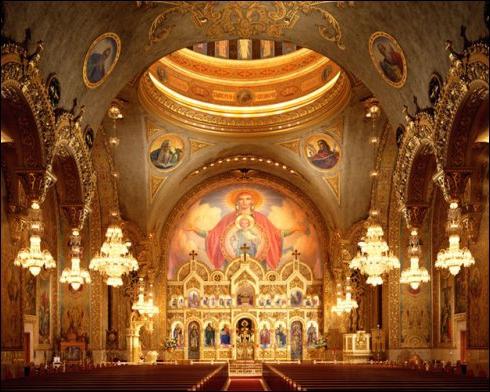In the very heart of Kiev there is a significant building of the times of Kievan Rus - St. Sophia Cathedral, not for nothing that it was on the UNESCO list. This is a really interesting and unique temple, a piece of history and culture of the Ukrainian people. The year the cathedral was erected is unknown: some researchers are inclined to think that it was built by Yaroslav the Wise, while others insist that construction began under Prince Vladimir. Whatever it was, but, despite its age, almost 1000 years, the temple survived to this day.
It is known that the St. Sophia Cathedral in Kiev was built at about the same time as the St. Sophia Cathedral of Constantinople. The Ukrainian temple was built like the Cathedral of Our Lady of Oranta, which is located in Constantinople. The construction of St. Sophia Cathedral in Kiev was timed to coincide with the victory of Kiev over the Pechenegs, and a temple was erected on the site of the decisive battle. Its architecture is largely reminiscent of the Byzantine style, with the exception of some nuances, therefore it is assumed that masters from Constantinople were invited to erect it.

St. Sophia Cathedral in Kiev was on the verge of destruction more than once. The church was first attacked by Andrei Bogolyubsky in 1169, then the cathedral was almost completely burned down during a fire in 1180. The horde of Batu Khan in 1240 also negatively affected the condition of the church, many relics were stolen or destroyed at that time. In the XV century, the St. Sophia Cathedral in Kiev was robbed by the
Crimean Tatars. Then came a period of decline. The revival of the temple was undertaken by
Ivan Mazepa in the XVII century.
The interior of the cathedral is still amazing and almost not affected by vandalism and time. On the walls there are still many frescoes, mosaics and graffiti. There are paintings made by Byzantine painters in the XI century, that is, when the temple itself was actually built. The best preserved mosaic works, their palette is very rich and has up to 170 shades. Not all of the frescoes have been preserved, and many of them were updated in the 17th century. Some of them were cleaned to their original appearance in the 19th century and covered with oil, the craftsmen painted on damaged murals.

St. Sophia Cathedral in Kiev also became the place where the remains of the princes of Kievan Rus rested. Here they found the sarcophagus of Yaroslav the Wise, his son Vsevolod, as well as grandchildren - Vladimir Monomakh and Rostislav Vsevolodovich. Such shrines as the Monomakh’s Cap, which was given to Vladimir by the Emperor of Byzantium, as well as the crucifix brought from Constantinople by Queen Olga, were kept in the temple.
With the advent of the Soviet government in the twentieth century, St. Sophia Cathedral in Kiev was in danger of destruction. At that time, many monuments of Christian culture were simply demolished, but France stood up for the temple, because the wife of King Henry I Anna was the daughter of Yaroslav the Wise, the founder of the cathedral. In 1934, it was decided to create a museum-reserve here.
St. Sophia Cathedral to this day is a museum, for this reason it does not belong to any religious organization. Divine services are held here only once a year - on the Independence Day of Ukraine, August 24, then representatives of different faiths gather to pray for the welfare of the country.